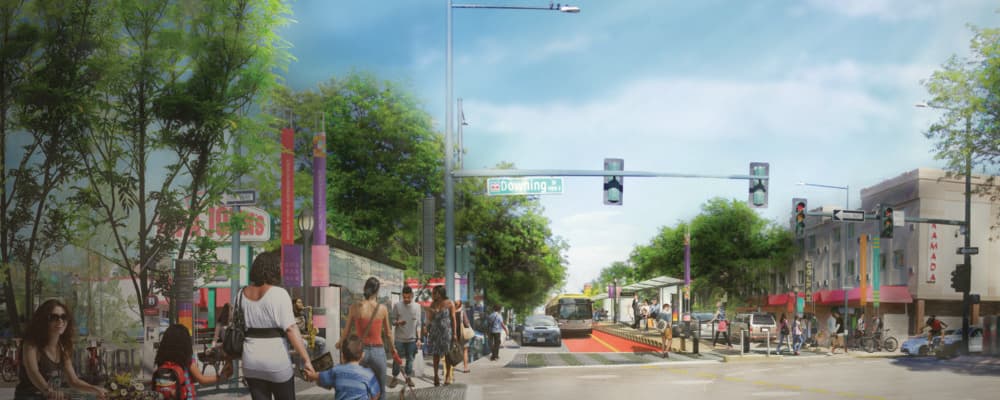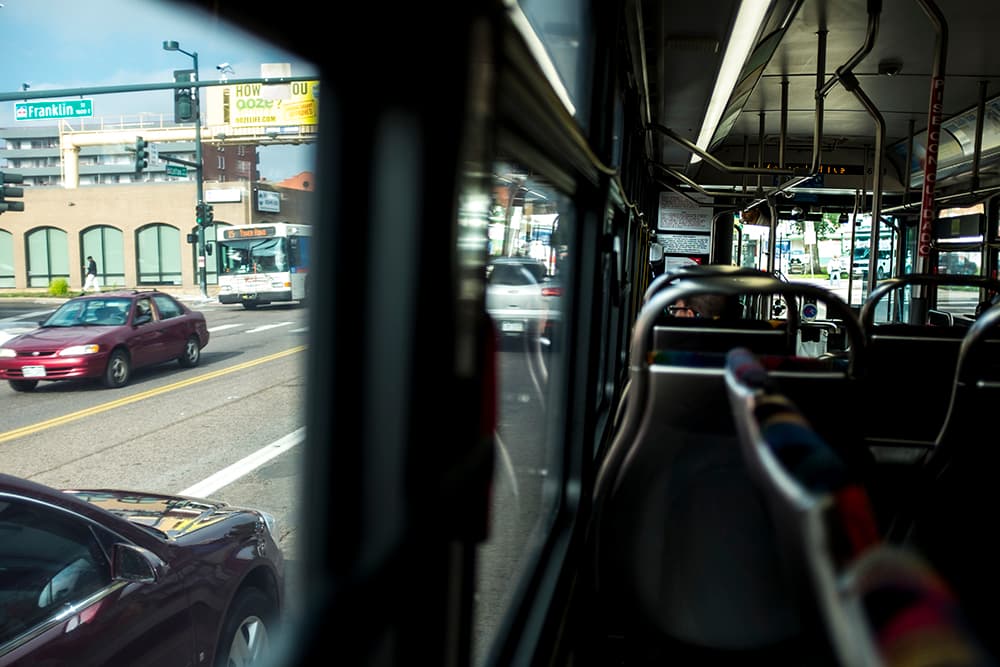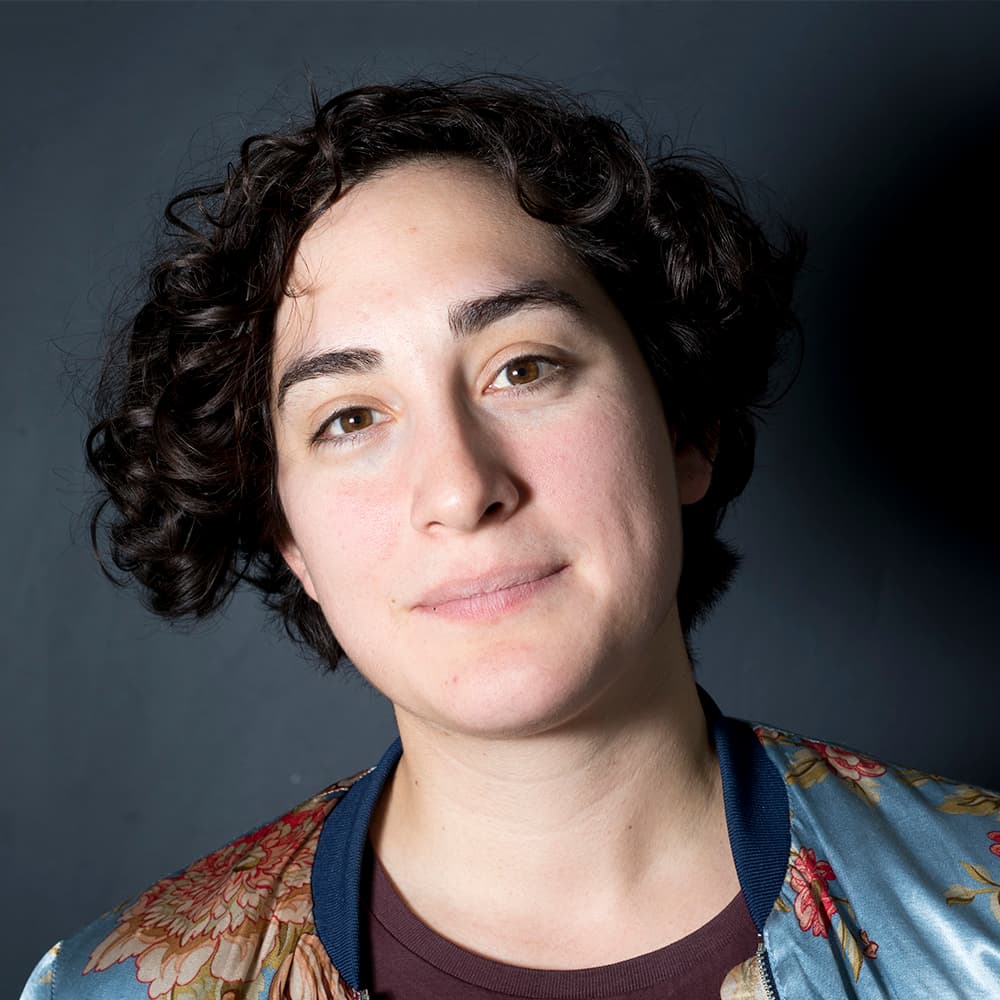The pavement of Colfax Avenue is the spine that supports many people and businesses. As the health of the road goes, so goes the health of the Colfax community.
First, Denver clamored for cable cars along Colfax in the 1880s. Their installation is credited with encouraging early development along the corridor, including the construction of National Jewish Hospital. Later, there were the boom years when auto traffic soared and Colfax was part of the transcontinental highway. Then, the 1968 opening of I-70 heralded Colfax's decline, as more and more roadtrippers opted for the newer highway.
Now, Denver sits at the precipice of another major change to East Colfax Avenue: bus rapid transit. Here's what it could mean.
Starting with Civic Center and ending at Aurora's border, the city hopes to improve reliability and frequency for bus riders by having buses run down the center of the street. The five miles of transit changes to East Colfax could be here as soon as 2021.
Since traffic along some parts Colfax has more than doubled in the past 30 years and only promises to grow, it's an effort to move the people of the city in a new way.

For transit riders:
At its core, bus rapid transit is a system that tries to make buses more reliable by giving them their own space to operate, including special lanes and stations.
So when Colfax bus rapid transit is complete in 2021 or 2022, it could deliver riders to their destination up to 15 minutes faster, according to the city's projections.
With buses traveling in their own lanes down the center of Colfax, you'd be able to catch a bus at every station every three to five minutes during peak times. Where exactly those stations will be isn't set in stone yet, but here's the latest map from the city:

Center-running BRT would supplant both the 15 and the 15L, which means some riders could be walking a little bit farther if their current stop doesn't become one of the final stops.
However, as currently envisioned, there would actually be six more stops in Denver's approximately 5.5 mile stretch of BRT.
That's because the city plans to have stops no farther than a half-mile apart along their share of the route, meeting the Institute for Transportation and Development Policy's BRT standard. At most, riders living along the route would be walking a quarter mile.
"What we found in the modeling was that there was so much advantage in the BRT service that even if folks had to walk farther, the model was telling us that essentially they would do so," said Denver BRT project manager Ryan Billings.
But, again, these stops aren't final. Billings emphasized that community input will help Denver balance speed and reliability with access for all. With fewer stops, the bus can make its trip faster. While fewer stops may compromise some walkability, it could improve access to jobs or school.
As for the stops in Aurora, the city of Aurora is on board for the project, albeit with a different outlook. Aurora does not plan to have dedicated bus lanes, either side-running or center, unlike Denver, according to the Denver Post.

For drivers:
Each side of Colfax loses one lane of vehicular traffic, leaving one lane each way for personal automobiles. This remains the most divisive element of the project: Where will all those drivers go?
Denver's traffic modeling suggests that driver's travel times would only be impacted by a few minutes. And the people who would drive on another street are balanced by the people who choose to take the bus. There will be extra auto traffic on side streets because of the city's overall growth, but not enough from the BRT project to significantly affect travel times.
Meanwhile, traffic along Colfax has continued to grow for the past 30 years. Since 1986, annual average daily traffic has more than doubled along some parts of Colfax. At Colfax and Speer, traffic rose 134 percent in that time.
And based on land-use data, CDOT's projections show Colfax traffic will continue to grow.
One possible way to mitigate traffic increases is to give people another option for how to get to work -- the bus. It can't reverse the trend, though, and traffic is still expected to increase.
Thanks in part to those continuing increases, Denver believes that riding on bus rapid transit will be as quick as taking your car.
For businesses:
BRT could mean more customers and sales, but maybe not.
In Seattle, one survey found that visitors coming to the Madison Street corridor via transit had relatively high spending power. New York City found that a year after their Fordham Road BRT program started, area retail sales had risen 24 percent.
Since BRT systems have generally corresponded with increased ridership, you could say that more visitors via transit means more dollars.
Then there's all the new business. Cleveland has seen tremendous investment along their BRT system: $114 in transit-oriented development for every dollar that the system cost, according to a 2013 report. That works out to $5.8 billion over just five years.
Or for Cleveland residents, that meant things like $27.5 million for the construction of the new Museum of Contemporary Art, seven new hotels, and a $100 million redevelopment of a retail district.
With so much money flowing in, my mind wanders to issues of gentrification and displacement, rising rents and disappearing businesses. Not so, said Joe Calabrese, CEO and general manager of the Greater Cleveland Regional Transit Authority, in an interview.
The only establishment that he heard was damaged by the HealthLine construction was a pizza shop that went out of business because they said that the construction made it hard to cross the street.
"My take on that is that they had bad pizza. Students will walk across the street to get pizza."
Calabrese said subsidized housing and market-rate housing both are still built along the corridor. "There wasn't a gentrification issue with our project," he said.
Yet it's something Denver's thinking about.
"We're trying to improve the lives of the folks that are already on the corridor," Billings said. "We're trying to attract new folks, but also make sure we don't displace folks."
So far, Billings said, most of the businesses and property owners are optimistic.
Colfax Business Improvement Executive Director Frank Locantore agrees it's a big deal. “It’s going to be a really great way for people to get into the area without having to worry about finding parking,” he said.
For everybody in between:
"We need to really start thinking about the transit project itself as being kind of the catalyst," Billings said. "It has the potential to really change the look and feel of Colfax and how it operates."
More than the bus and its stops, there also is $20 million set aside in the city's proposed general-obligation bond package for Colfax streetscape and pedestrian improvements that will coincide with the project. The GO Bond spending proposal goes to voters this November.
And then there's the cost. Denver is committed to making this project happen in one way or another, but at its upper end, it could cost roughly $168 million. That's including $55 million in GO Bond money, should the voters accept the package proposed by city leaders.
The plan is to fill the rest of that gap with local and federal funding. By 2018, the city will develop a more detailed design and a project implementation schedule will be developed after they figure out what money is available. Initial targets anticipate construction could begin by 2020.
So even if you managed to live in Denver and never step foot on Colfax, you may still feel the effects of BRT. Or maybe you'll see it from the bus windows.












